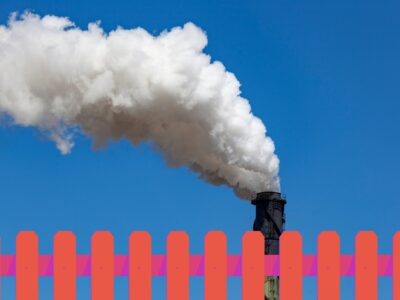Does Any Pollutant Mean ANY Pollutant?
It got less attention than it should because it was upstaged by the Supreme Court’s healthcare decision, but last week’s D.C. Circuit ruling on climate change was almost as important in its own way. By upholding EPA’s regulations, the court validated the federal government’s main effort to control greenhouse gases. To the extent that the case got public attention, it was because the court affirmed EPA’s finding that greenhouse gases endanger human health and welfare. However, I want to focus on a much more technical, but practically very important question about the scope of the EPA regulations. Specifically, the issue is whether EPA was correct that the Clean Air Act unambiguously requires sources emitting more than certain amounts of greenhouse gases to use best available control technologies, even if they did not exceed threshold levels for conventional pollutants. What follows is necessarily technical, although I’ve tried to explain the issues so that interested non-lawyers can follow the discussion.
Some background is necessary to even understand the issue. As a key source of regulatory authority for regulating greenhouse gases, EPA has relied on the PSD (Prevention of Serious Deterioration) section of the Clean Air Act. The statute requires EPA to set air quality standards for certain key pollutants, the so-called criterion pollutants. The PSD provisions apply to areas in which those standards have been met for a particular pollutant. There are special requirements for new sources in such areas.
This brings us to the question of what any pollutant means. There are two relevant sections of the statute. First, under section 165, any “major source” must use the “best available control technology for each pollutant subject to regulation under this chapter.” Second, under section 169, a major source is defined as one that emits more than specified amounts of “any air pollutant.”
Industry made the seemingly reasonable argument that “each pollutant” in section 165 and “any pollutant” in section 169 both referred back to the pollutant that triggered PSD coverage in the first place (or at least to criterion pollutants rather than others.) Following its longstanding view of the statute, however, EPA said that these terms unambiguously covered any substance regulated by the statute, including greenhouse gases. Which side was correct?
The interpretation favored by business seems to fit the PSD rules snugly within the overall structure of the statute: other provisions tell states how to attain the standards for criterion pollutants and what happens if they fail to do so, while the PSD rules tell them how to keep criterion pollutants even lower once they attain the standards. Although I won’t go into it here, this all makes section 165 fit nicely with other PSD rules that plainly do focus on the pollutant that triggered coverage.
At first sight, this seems very reasonable, but the court was correct to reject these arguments. Industry’s error is particularly clear with respect to the interpretation of “each pollutant” in section 165. Recall that section 165 requires use of best technology for “each pollutant” emitted by a major source. The statutory language (“each pollutant subject to regulation under this chapter”) is crystal clear — “this chapter” is the entire Clean Air Act, chapter 85 of Title 42 of the U.S. Code. Since greenhouse gases are regulated as emissions from motor vehicles under other EPA regulations, they are necessarily subject to section 165. (It’s important to keep in mind that the Supreme Court already held that greenhouse gases fall within the statute’s broad definition of “air pollutant.”)
The definition of major source in section 169 is a bit trickier. It applies to sources emitting more than specified amounts of “any air pollutant.” This is broad language, but not quite as sweeping as 165. But restricting the language would contravene an important purpose of the PSD rules.
Although maintaining low levels of criterion pollutants is a major purpose of the PSD rules, it is not the only purpose. Section 160(1) also sets forth a broader purpose to protect against adverse effects from air pollution that “may be reasonably anticipated to occur . . . not withstanding attainment and maintenance of national ambient air quality standards.” EPA has found that greenhouse gases do have such effects, and the court had already (and correctly) upheld that determination.
It’s also significant that in section 169(3), Congress defined best available technology as the maximum degree of reduction of “each pollutant subject to regulation under this chapter,” reinforcing the concern with non-criterion pollutants expressed in section 165. Given the purpose section, section 165, and section 169(3) — all of which show that the PSD provision extends beyond criterion pollutants — it’s hard to see an argument for cutting back on the scope of “any pollutant” in the major source definition.
Reasonable people may differ about where to draw the line in determining that a statute is too clear to leave room for other interpretations. In terms of the section 165 requirement of best control technology, it is hard to see how Congress could have made it any clearer that best technology is required for any pollutant regulated by any provision of the statute. The definition of major source in section 169 does not rise to quite that level of “proof beyond a reasonable doubt.” Perhaps the drafters had in mind narrower coverage. But we live in an era in which statutory text, not assumptions about legislative intent, are supposed to be the decisive factors in statutory interpretation. It would require powerful arguments to o show that “any pollutant” means a great deal less than it says, and industry’s arguments do not rise to that level.
The bottom line is that the D.C. Circuit was correct in upholding EPA’s view that the PSD provisions unambiguously cover greenhouse gases. How will the Supreme Court rule if it takes the case? If Justices like Scalia are true to their avowed belief in the primary of statutory text, they should find this an easy case. But time will tell.








Reader Comments